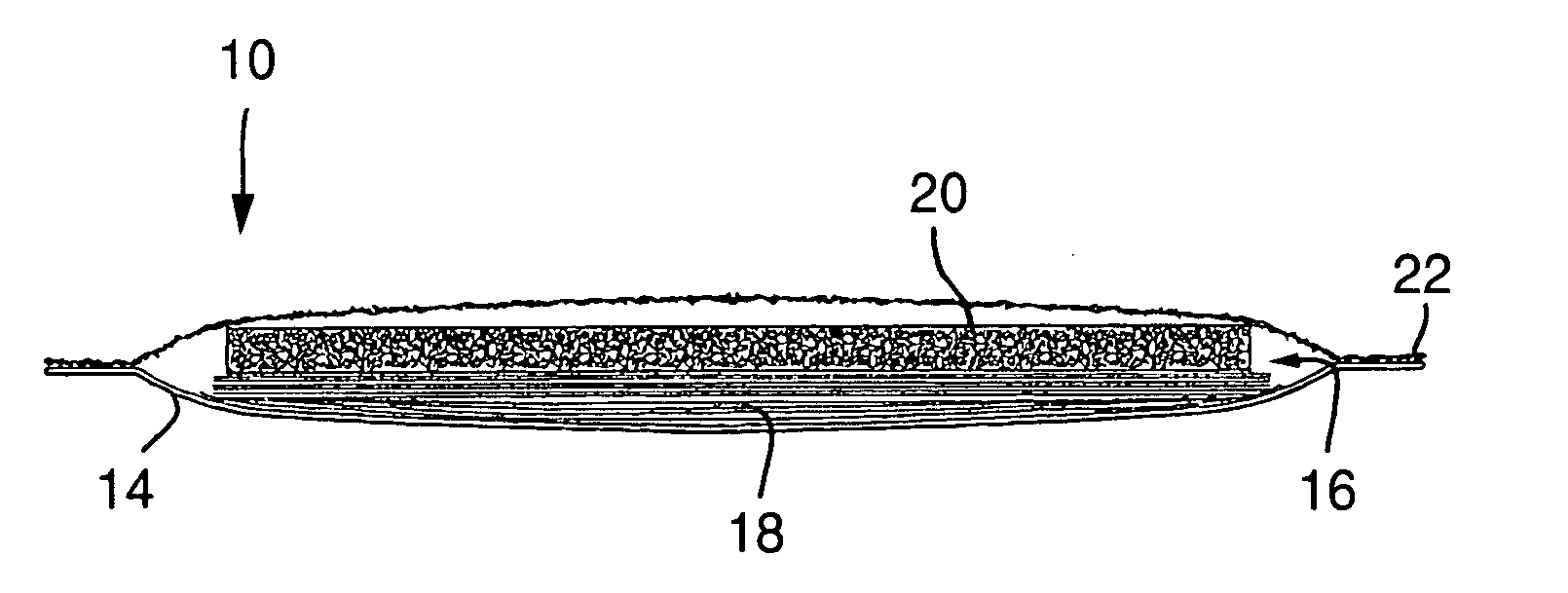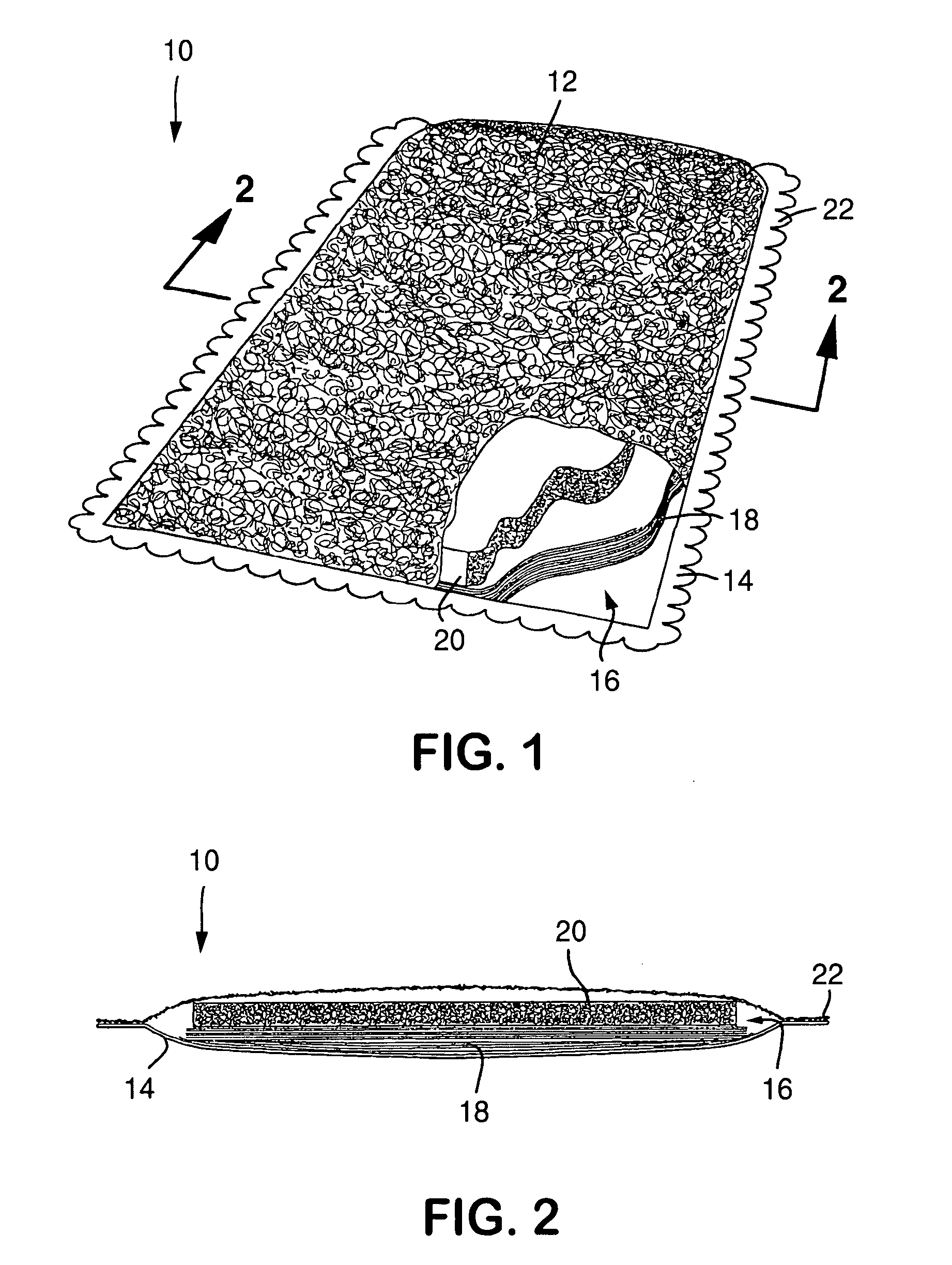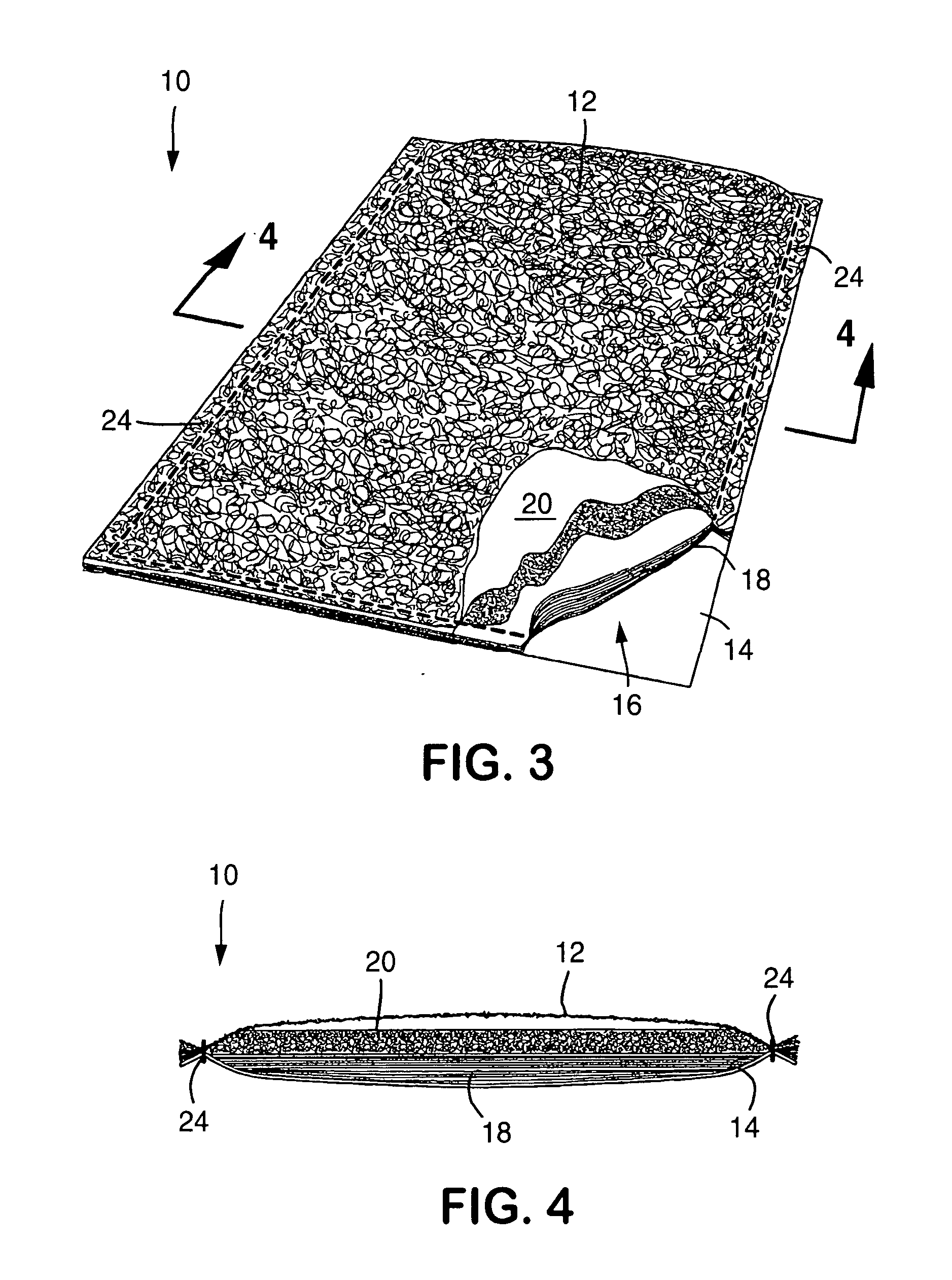Composite cleaning products having shape resilient layer
a technology of resilient layer and cleaning product, which is applied in the field of abrasive scrubbing pads, can solve the problems of high price of scrubbing pads, unsuitable for disposable or single-use products, and products can become fouled with dirt, grease, bacteria, etc., and achieves the effect of resisting the softening effect of water on the fiber, maintaining the stiffness of the cell wall, and high levels of lignin
- Summary
- Abstract
- Description
- Claims
- Application Information
AI Technical Summary
Benefits of technology
Problems solved by technology
Method used
Image
Examples
example
[0134] The following commercially available products were compared with a cleaning product made in accordance with the present invention: SCOTCHBRITE Heavy Duty Scrub Sponge, marketed by 3M; O-CELLO Heavy Duty Sponge Scrubber, marketed by 3M; DOBIE Cleaning Pad, marketed by 3M; SCRUB-IT Scrub Sponges, marketed by Supply Plus; CLOROX S.O.S. Scrubber Sponge, marketed by the Clorox Company; CHORE BOY LONG LAST Scrubbing Sponge, marketed by Reckitt Benckiser, Inc. and DOBIE Easy Grip Scrubber, marketed by 3M.
[0135] The cleaning product of the present invention (Example No. 1 below) contained an abrasive layer made from a polypropylene meltblown web. The meltblown web was ultrasonically bonded to a cover layer comprising a hydroentangled web (Wypall® X-70 wiper available from Kimberly-Clark) having a basis weight of about 82 gsm.
[0136] The cleaning product of the present invention contained an absorbent core that comprised a sponge-like member comprising a 6 osy bicomponent spunbond we...
PUM
| Property | Measurement | Unit |
|---|---|---|
| density | aaaaa | aaaaa |
| density | aaaaa | aaaaa |
| density | aaaaa | aaaaa |
Abstract
Description
Claims
Application Information
 Login to View More
Login to View More - R&D
- Intellectual Property
- Life Sciences
- Materials
- Tech Scout
- Unparalleled Data Quality
- Higher Quality Content
- 60% Fewer Hallucinations
Browse by: Latest US Patents, China's latest patents, Technical Efficacy Thesaurus, Application Domain, Technology Topic, Popular Technical Reports.
© 2025 PatSnap. All rights reserved.Legal|Privacy policy|Modern Slavery Act Transparency Statement|Sitemap|About US| Contact US: help@patsnap.com



